
– Sea & Sage trip at Lake Carneros – photo by Tom Drouet
Bird Surveys
Sea and Sage Audubon Society sponsors several bird surveys throughout the year. Other organizations also sponsor bird surveys in which Sea and Sage members participate. These surveys occur annually, monthly, or on other regular schedules.
Annual Surveys
Other Surveys
Christmas Bird Count
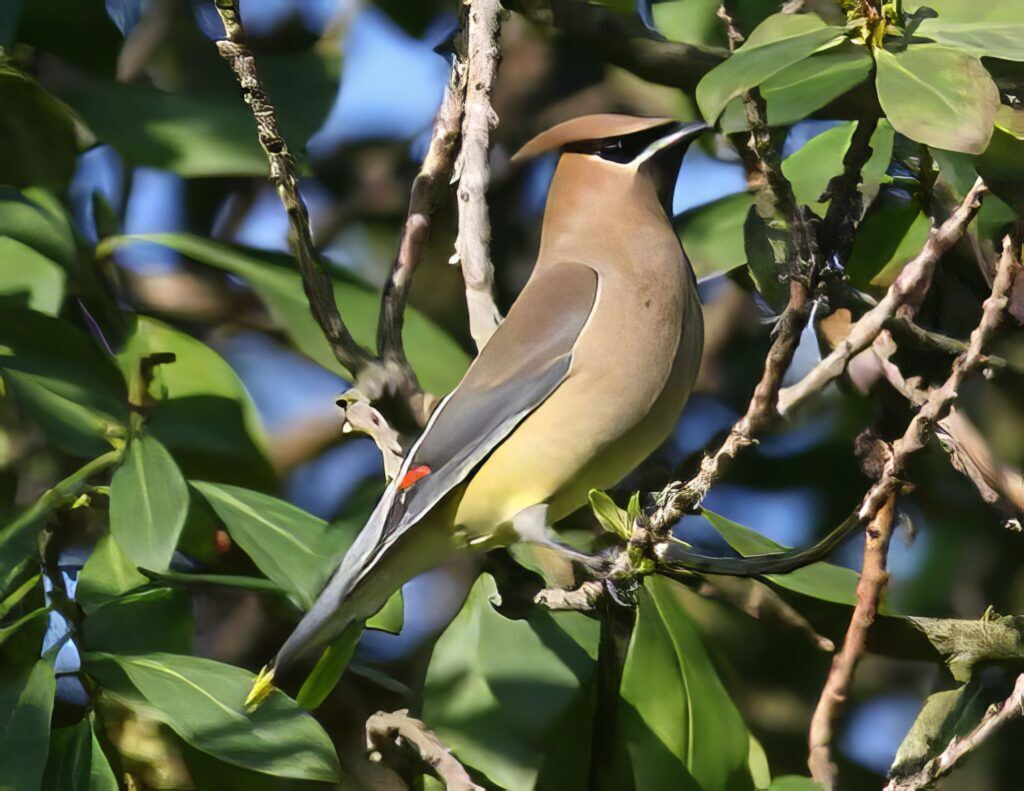
Cedar Waxwing photo by Dr. Bruce Odou
The Christmas Bird Counts are always held between Dec. 14th & Jan. 5th. This annual bird count encompasses the United States and Canada, as well as Central and South America, the Pacific Islands, West Indies, and Bermuda. The data collected helps scientists learn more about the status and distribution of our birds. Here in Orange County, we have four different Christmas Bird Counts.
This year the counts will be held on the following dates:
- North East (Inland) CBC – Dec. 14, 2025
- San Juan Capistrano (South County) CBC – Dec. 21, 2025
- Puente Chino-Hills CBC – Dec. 27, 2025
- Coastal CBC – Jan. 4, 2026
How Can I Participate?
One of the objectives of Environment for the Americas (the sponsor of the hemisphere wide count) is to enter all of the data into eBird. This means that it is very simple to participate. All of the regularly scheduled bird counts in April and May will be included in the OCSC. The dates do not need to change. I will also include the checklists from all of the Sea and Sage field trips in Orange County held during April and May.
Many of you already use eBird. You can enter your Spring Count data directly into eBird for any birding that you do during April and May. You don’t have to send tally sheets to anyone. All that is needed is to share the eBird check list with the Sea and Sage Audubon eBird account. (The eBird user name is sea_sage_aud).
If you don’t currently use eBird, you can sign up. It’s free! www.ebird.org
A goal for the OCSC is to count all the Top 100 Hot Spots shown in eBird. It does not matter how many times a particular spot is covered. Users of the eBird data can sort that out.

Orange County Spring Count
What is the OCSC?
The OCSC (Orange County Spring Count) is part of a nationwide migration count, similar to a Christmas Bird Count, but timed to the opposite half of the migration cycle. This year the OCSC is being expanded to try to capture more of the birds that migrate through the county. Sea and Sage is encouraging birders to participate anytime during the months of April and May. This will allow us to see and count more of the species that migrate through the county. Again, this year we will try to focus on the best areas for birds since comprehensive coverage of the entire county is not a realistic goal.
How Can I Participate?
One of the objectives of Environment for the Americas (the sponsor of the hemisphere wide count) is to enter all of the data into eBird. This means that it is very simple to participate. All of the regularly scheduled bird counts in April and May will be included in the OCSC. The dates do not need to change. I will also include the checklists from all of the Sea and Sage field trips in Orange County held during April and May.
Many of you already use eBird. You can enter your Spring Count data directly into eBird for any birding that you do during April and May. You don’t have to send tally sheets to anyone. All that is needed is to share the eBird check list with the Sea and Sage Audubon eBird account. (The eBird user name is sea_sage_aud).
If you don’t currently use eBird, you can sign up. It’s free! www.ebird.org
A goal for the OCSC is to count all the Top 100 Hot Spots shown in eBird. It does not matter how many times a particular spot is covered. Users of the eBird data can sort that out.
San Joaquin Wildlife Sanctuary

UCI Freshwater Marsh
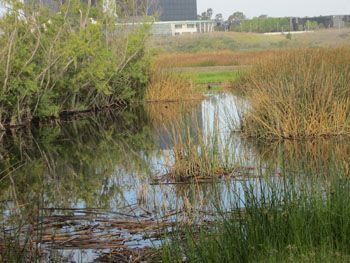
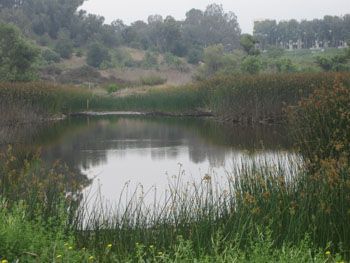

This census is conducted by birders from Sea & Sage Audubon on the 1st Wed. morning of each month from 7:15 – 10:00 AM.
We divided the preserve into four areas so that we could cover the area more completely:
AREA ONE: Sediment Pond; Ponds 1,2,3; land area between the parking lot and
Campus and between road & eastern preserve boundary
AREA TWO: Ponds 4, 5, 6, 7, 8, 9, 10, 11
AREA THREE: The Bluff Area and access road
AREA FOUR: The Arboretum, Upper Marsh, and access road
University Hills EcoPreserve
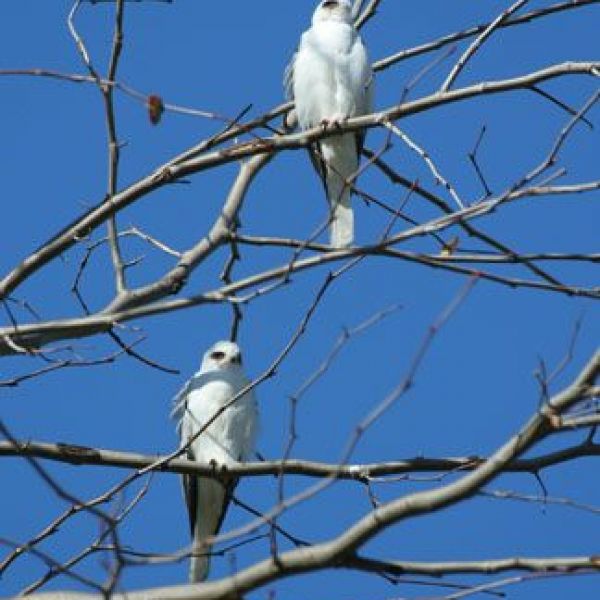
University Hills Ecological Preserve is located in the University Hills Community. The preserve is a mosaic of two ecosystems of California Coastal Sage Scrub and grassland. These 60 acres provide critical nesting habitat for threatened birds like the California Gnatcatcher and the Coastal Cactus Wren.
This census is sponsored by UCI Nature. It is conducted monthly on the third Thursday of the month.
BirdSeasons
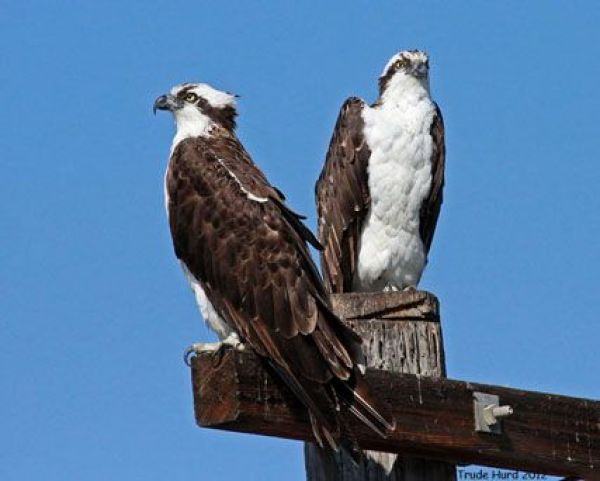
photo by Trude Hurd
Sea and Sage Audubon is participating in California Audubon’s, BirdSeasons CA as part of its contributions to the National Phenology Network (NPN). Phenology is the study of seasonal change of plant and animal life at the population level in relation to timing changes in relation to biotic and abiotic forces. This nation-wide network is comprised of various projects across the country and all data captured is entered into the Nature’s Notebook database. NPN’s database houses phenology data used by scientists to manage invasive species, understand the timing of carbon cycling, and assess the vulnerability of species, populations, and ecological communities to ongoing climate change.
Sea and Sage’s project consists of a survey thru the San Joaquin Wildlife Sanctuary to document observations of eight species of birds. Each survey is timed and follows the same route so that observers can record comparable data. Teams are making behavioral observations such as feeding, courtship and territorial individuals, to name a few. Documenting these behaviors can help scientists determine whether the timing of these actions is changing over a period of time.
Over the past six years, we have had two teams per week in the field making these observations. After-which, they input their data helping researchers better understand the important phenological changes of these eight species in our area.
If you are interested in this behavioral study and are proficient at identifying the birds in Orange County, please contact Bettina Eastman (bettinae24@gmail.com). She can explain the protocol and training necessary to participate in this Community based science project.
Upper Newport Bay
Monthly census reports
Starting in 2000, Sea and Sage Audubon Society has been conducting a monthly bird census in Upper Newport Bay from the deck of a small pontoon boat on the 3rd Wednesday morning or each month from 8:30 to 11:00 a.m. The census is done by birders from Sea and Sage, coordinated by Nancy Kenyon. Until the fall of 2010, our course was from the Back Bay Science Center boat dock, up the bay to the boat limit sign above the old salt dike, and then back again. The data we have collected is used for analyzing the status of resident and migratory birds in the upper portion of the bay.
In the fall of 2010, we switched our boat and starting location from the Back Bay Science Center to the Newport Sea Base because the dock at the Back Bay Science Center needed repair. Fortunately for us, the pontoon boats belonging to the Sea Base are much more suitable for our needs because they can hold more people and have a steadier deck from which to bird. All of our census data has been posted here on the website. Click on the census year you are interested in seeing.
In March 2020, the monthly bird counts were suspended due to the COVID pandemic. Hopefully they will be restarted when conditions improve.
Tree Swallow Nest Box
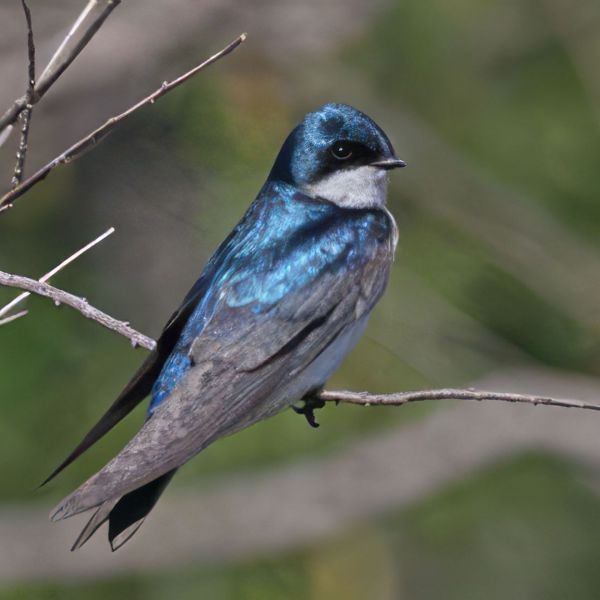
Nestbox Program at the San Joaquin Wildlife Sanctuary in Irvine
Christine Tischer
SJWS Nestbox Program Manager
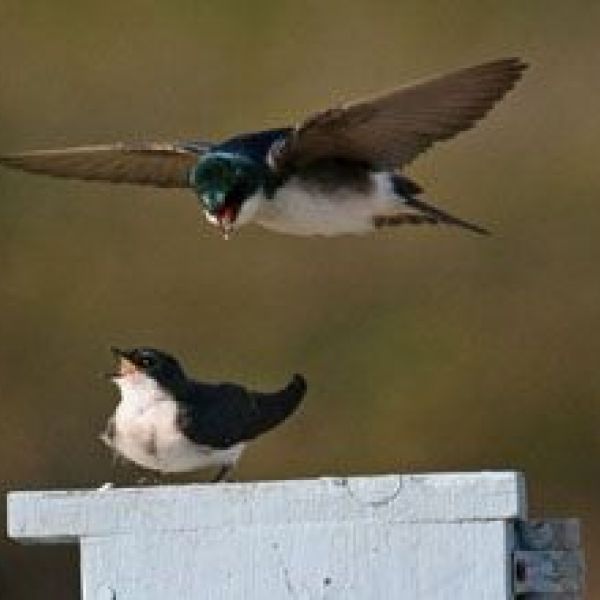
History
The Tree Swallow is a neotropical migrant passerine species whose breeding range includes the majority of North America. This small 5” bird is a lowland cavity nester that typically nests in tree cavities in open areas in close proximity to water. It migrates 100s of miles to overwinter in the southern United States, Mexico, and Central America and returns to the breeding grounds in early February. Southern California is at the southernmost known range of the Tree Swallows’ breeding grounds. Successful breeding was not confirmed during Orange County atlasing years in 1985-1990 and only three pairs of nesting Tree Swallows were confirmed in Orange County post atlasing 1991-1994 (Gallagher 1997).
Tree Swallows typically nest in tree cavities, as indicated by their name. However, this species and other cavity-nesting species were declining as breeding birds in Orange County because of losing old-growth tree groves to residential and commercial development and competition with non-native cavity-nesting species like the European House Sparrow and starling. Luckily, tree swallows readily adapt to artificial nest boxes, and the entrance hole can be made smaller to eliminate starlings’ use. In the late 1990s, Sea and Sage Audubon helped Irvine Ranch Water District (IRWD) install a handful of nestboxes at the San Joaquin Marsh as part of mitigation measures for IRWD’s use of the San Joaquin Marsh as a water filtration and purification facility. These boxes were not monitored to determine if they were successful or not.
However, Jan Wasserman, manager/founder of the Tree Swallow Nestbox Project in Ventura County, made a single trip to the San Joaquin Marsh in 1999 to educate Sea and Sage on the care and maintenance of artificial nestboxes. She banded 19 Tree Swallow nestlings and 3 Tree Swallow adults in 5 boxes. Beginning in 2000, Sea and Sage Audubon recruited several volunteers to monitor and maintain the boxes. Hardly any vegetation was associated with the ponds at the program’s start in 2000. Since then, restoration activities have greatly improved the landscape at the marsh while providing more foraging, overwintering, and nesting habitat for numerous bird species. Nestboxes are shifted yearly to account for vegetative growth and optimize productivity. The program has successfully brought the Tree Swallow back to the County of Orange as a breeding bird species.
Monitoring
Volunteers monitor the boxes on a weekly basis during the breeding season (March through July). Weekly monitoring is very basic and encourages novice birders, recreational birders, expert birders, retirees, students, and minors (with help from their parents) alike to come to the San Joaquin Wildlife Sanctuary and experience nature as well as take pride in helping with a “citizen scientist” research project. Weekly monitoring consists of visiting each box, opening the box to determine if a nest is present, recording the number of eggs, number of chicks, approximate age of chicks, and eventually, determine how many chicks successfully fledge prior to cleaning out the used nest so that the box will be ready for the next nesting. Adults that are inadvertently captured during weekly nestbox monitoring checks are checked by the volunteers for bands and the band number is recorded. Checks on a weekly basis are necessary to prevent occupation of boxes by non-native cavity nesting bird species, reduce parasitism events (ants and mites), and make sure boxes are in working condition throughout the breeding season.
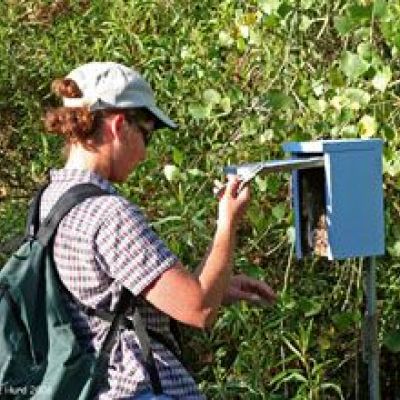
Christine Tischer opening Tree Swallow nestbox
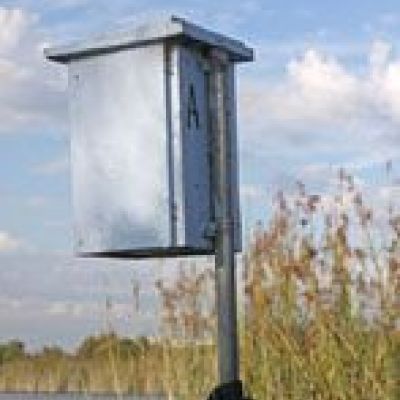
Tree Swallow nestbox
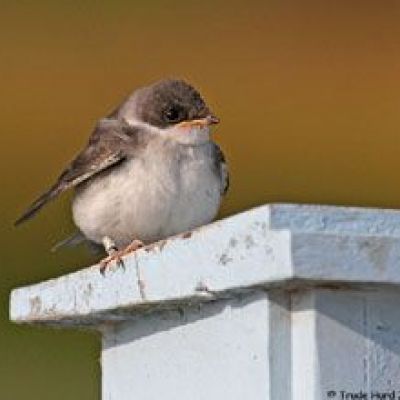
Tree Swallow fledgling
Banding Program

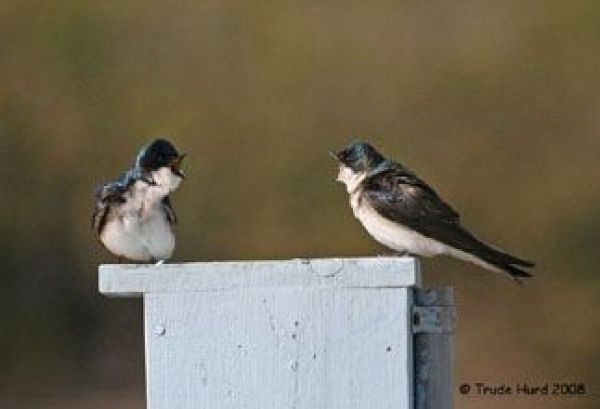
photos by Trude Hurd
Golondrinas de las Americas
The Golondrinas de las Americas is an international community of biologists studying swallows in the genus Tachycineta from northern Canada to Argentina. The program is based out of Cornell University in Ithaca, NY, and uses standardized protocols to better understand the breeding biology of swallows and their aerial insect prey. The network of biologists monitor the effects of weather and insect density on avian breeding at different latitudes across the Western Hemisphere and are pursuing studies of geographic variation in many aspects of swallow biology. In 2013, the San Joaquin Wildlife Sanctuary increased the number of nestboxes at the marsh to 100 and adopted the standardized monitoring protocol utilized by the Golondrinas network in an effort to contribute to the geographic study of the Tree Swallow.
2000-2014 Nestbox Results
Nestbox Availability and Utilization

The program has increased from 56 boxes in 2000 to a high of 113 boxes in 2004 and presently supports 100 boxes. The graph below shows the number of nestboxes available each year (dark blue line) compared to the number of nestboxes utilized during each nesting attempt. A box was considered utilized if at least one egg was laid in the nest. The graph below shows the number of nestboxes utilized by tree swallows. Three other cavity-nesting bird species, western bluebird (Sialia mexicana), house wren (Troglodytes aedon), and Bewick’s wren (Thryomanes Bewickii), have occupied a nestbox or two over the years, but their results are not included in this summary.
Tree Swallow Egg Production
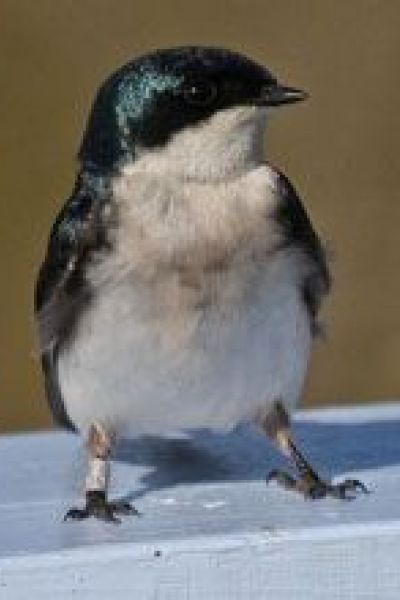

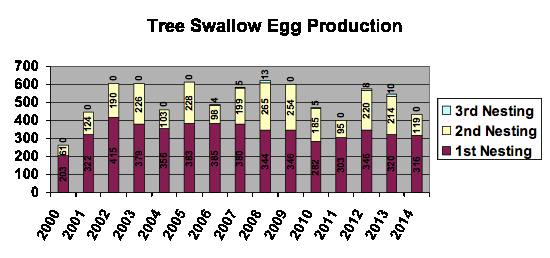
Tree Swallows Hatched
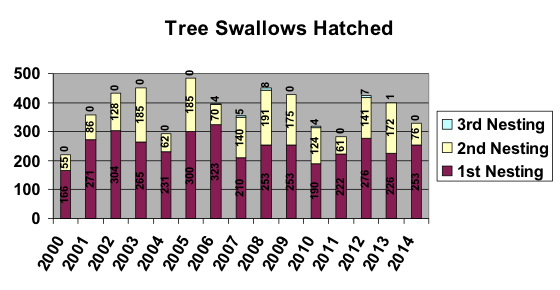
Tree Swallows Fledged
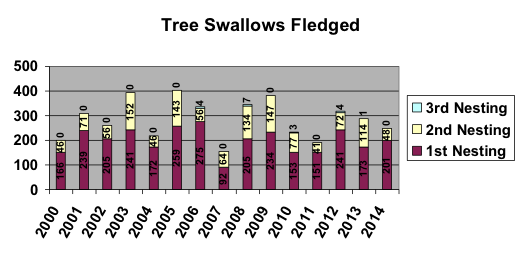
Tree Swallow Recaptures
Betty (Band #900-05154):
Nelly (Band #1601-34579):
Nadine (Band #1601-34580):
Justine (Band #1771-03223):
Paula (Band #2000-86663/Blue Band on Right Leg):
Lola (Band #1771-04032):
Originally banded as a nestling in Box B15 on June 29, 2002. Recaptured 3 times in 2005 in Box B36, twice during first nesting and once during second nesting. Recaptured again in Box B36 in 2006 during the second nesting. In 2008 she was recaptured in Box B34 on April 18th. On June 13, 2009 she was recaptured in Box B33. She was last recaptured in Box B15 on June 24, 2010 at the ripe old age of 8 years old.
If you are interested in helping out with the Nestbox program, please contact Christine Tischer at clmukai13@gmail.com